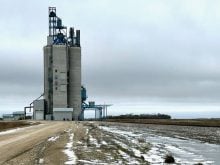Fertilizer Canada is hoping to take its Nitrous Oxide Emission Reduction Protocol abroad to five developing countries.
“We want to make sure that our products are being used sustain-ably around the globe so we can have a social license to sell the fertilizer around the world,” said senior vice-president Clyde Graham. “We also want farmers to get the maximum value from that fertilizer so they understand how good a product it is.”
The protocol is based on the principles of the 4R nutrient stewardship program, which is using the right source of fertilizer at the right rate, right time and right place.
Read Also

Farmland ownership fires up Saskatchewan politicians
Saskatchewan politicians debate the enforcement of farmland ownership laws in the province.
The United Nations’ Food and Agriculture Organization has recognized the value of the 4R program and has said it should be disseminated to farmers around the world.
Fertilizer Canada has identified Colombia, Ethiopia, Ghana, Senegal and a yet-to-be-determined country in Southeast Asia as the first five markets where it wants to spread its stewardship message.
It picked countries where farmers are already using fertilizer but where there is room for significant improvement.
The association wanted to be in countries where the scale was workable rather than places like India and China where there is an abundance of land and farmers.
Fertilizer Canada will be working with groups such as the Canadian Cooperative Association and the International Plant Nutrition Institute to help spread the word.
It hopes to work with local co-operatives and leading farmers in the five countries.
Graham, who gave a presentation on the protocol last week at the COP23 conference in Bonn, Germany, said there has been good uptake among Canadian farmers.
“We have got extension programs for farmers, and farmers are really adopting the program in good numbers,” he said.
In Canada, the association has been able to demonstrate that farmers can decrease nitrous oxide emissions by 25 to 50 percent by following the protocol. Nitrous oxide is a greenhouse gas that is 300 times more potent than carbon dioxide.
“It doesn’t take much to have an impact on climate change,” said Graham.
He said the protocol will work the same on a small farm in a developing country as it does on a large-scale operation in Canada.
“Wheat or corn doesn’t know that it is being grown on a two acre farm or a 5,000 acre farm,” he said.
However, there will be some challenges with one of the 4Rs. Finding the right source of fertilizer in the developing world can be difficult because of the lack of infrastructure such as ports, railways, trucks and storage facilities.
And while a Canadian farmer may be using soil tests and plant tissue tests to refine his fertilizer needs, things are less sophisticated and on a much smaller scale in the developing world.
“In a developing country, you might be using a bottle cap to measure the fertilizer out,” said Graham.















